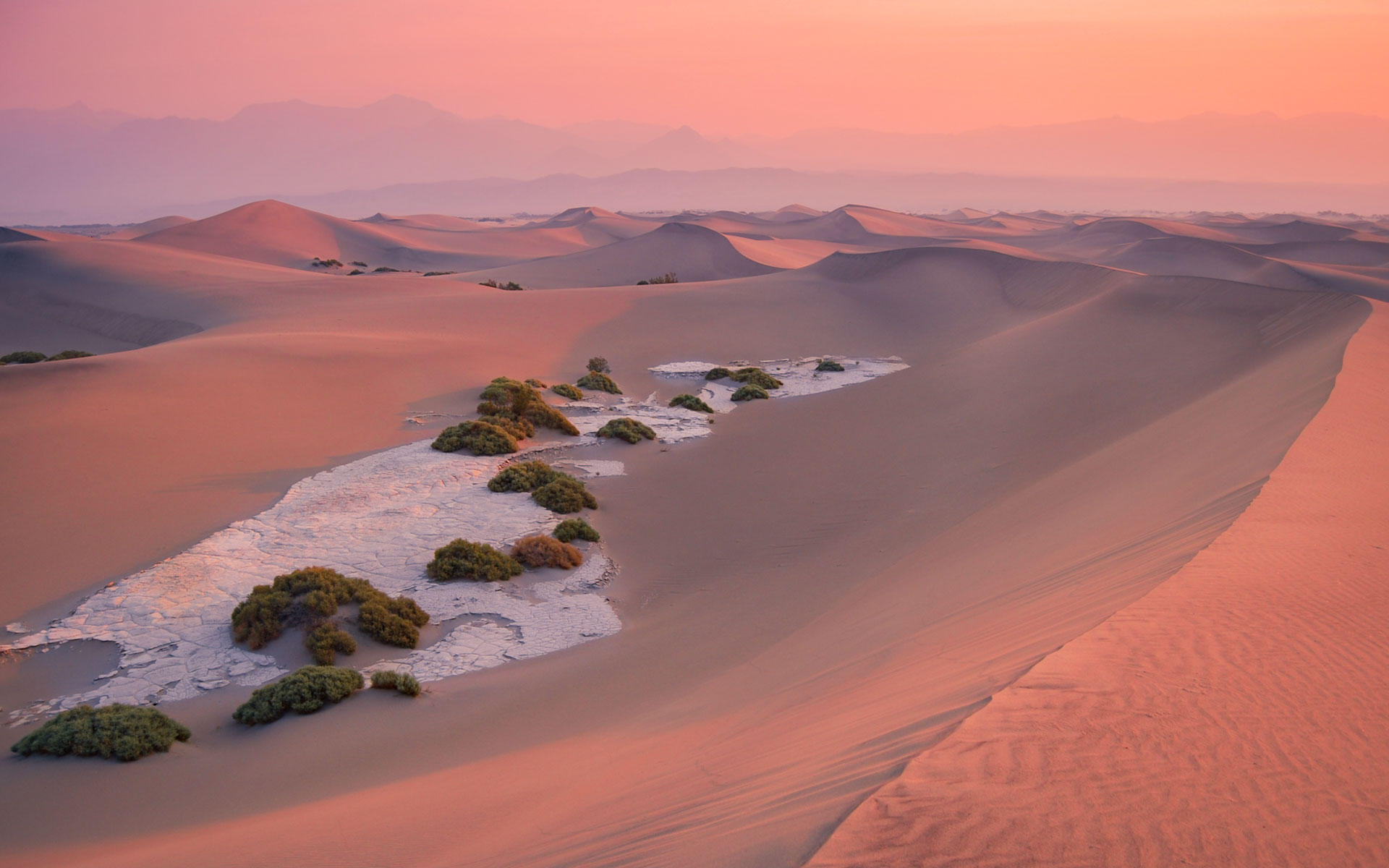
- Destinations
- California
- Death Valley NP
- Mesquite Flat Dunes
Mesquite Flat Dunes
There are two major sand dune systems in the Death Valley National Park. First, Mesquite Flat Dunes, which have very easy access, and are well known and frequently visited. Second, the more secluded and much less visited Eureka Sand Dunes. Both are worth a visit, although I personally prefer the latter. The reason for that is simple; they are less crowded and therefore have less footprints.
Practical advices:
Summer is not the time to be in the Death Valley and if you cannot help yourself for whatever reason you certainly should avoid the Mesquite Flat Dunes. Heat gets trapped in the sand and the temperatures during the day are not be withhold. At most be there only in the very early morning.
Take water with you to keep yourself well hydrated throughout the entire time. The walk to the sand dunes is longer than it looks from the road and walking the sand dunes up and down will tire you and make you sweat faster than you can imagine. Even more so if you are carrying a lot of photographic equipment with you.
While you wander through the dunes you will realize quickly that certain photogenic spots are ruined due to foot prints in the sand. So, keep an open eye thinking ahead of possible compositions and you do not ruin potential compositions yourself with your own foot prints.
Getting there:
The Mesquite Sand Flat is the most central located attraction in the entire national park and easily accessible. Regardless of which route you are taking to get to Death Valley, Route 190, 267 or 374, you will at some point get to the Sand Dune Junction. All three routes meet there and you will already see the sand dunes even before you get to Sand Dune Junction. About 5 miles southwest of the junction is Stovepipe Wells which offers lodging and a campground and is the best location to stay overnight for early day or late afternoon shooting.
You can park along Route 190, south of the dunes, and hike up to them. My personal favorite spot to get into the dunes is at Devil’s Cornfield which is a neat thing to be photographed too.
Taking shots:
There is no doubt that low light is required. The best about sand dunes photos is the sharp contrast of light and shadows on the form of the dune or the sand ripples. Be out there in the dunes at sunrise to early morning, late afternoon to sunset, and by the light of the rising or setting full moon. Plan ahead to be at the spot at the right time. You might need up to one hour to walk from your car to be where you want to be.
The ideal time of the year to photograph the Mesquite Flat Dunes is winter, when the sun is low in the sky. You will have several hours after sunrise and before sunset to compose and take your shots. Additionally, there is almost no one in the Death Valley during this period of the year which means no to minimal foot prints in the sand. Besides, winter is raining season in California and you might be lucky to get some clouds in the sky to enhance the view of your shots.
As far as equipment is concerned, I advice bringing along a wide angle lens for views including sand ripples, critter tracks and leading lines, and a telephoto for compressed and more abstract views of far off dunes.
Last update: July 25, 2014
2 Comments
Leave a Reply Cancel reply
This site uses Akismet to reduce spam. Learn how your comment data is processed.


This page is absolutely fantastic, thank you so much for your thorough knowledge on photographing this beautiful place. It’ll be our first visit, and I’m very excited about it!
Good luck out there, Michelle! Be sure to start very early in the morning. It takes a significant time until you reach the middle section and you should be there before the sun is out to give you enough time to scout for compositions.